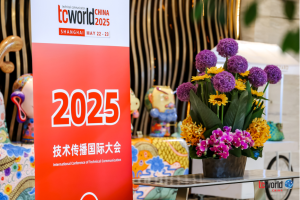Software localization refers to the process of adapting software or various services provided through the web and other platforms to users' language and usage habits in a target region, or a locale. From translation and UI design to interaction optimization, software localization involves multiple departments, including development, design, content, and testing. Its goal is to ensure that products and services provide the same high-quality user experience in different target markets.
In today's global digital wave, software localization has become an indispensable and crucial part of developing various professional products and services. However, the value of standardized management of the software localization process is often underestimated and overlooked: The satisfaction of users greatly depends on professional software localization. On the contrary, non-standard or ad-hoc software localization management can harm the quality of products and services and even create unnecessary negative impacts on a brand.
Best Practices for Software Localization
Most companies venturing into international markets often do not make specific provisions for software localization but instead, view it as a simple translation of textual content within the software. Falling into this misconception can lead to increased development and management costs, as well as introduce various risks and errors due to problematic management practices. However, several common best practices can help you achieve high-quality software localization with minimal costs:
- Design interface with space reservations: Since different languages have significant differences in text length, most products and services will encounter display issues after importing translated strings, and these issues may remain unresolved even after reworking, affecting both display and user experience. The fundamental reason behind this is that most multilingual versions of the same software directly reuse interfaces designed based on the baseline language's usage habits and UI design. Therefore, for software, especially mobile services localization, it is essential to consider strategies such as reserving text box width or space adaptation, separating text from images, and vertical menu item alignment during the initial interface design phase. This ensures that different locales receive optimized interface displays.
- Manage strings as resources: For many small and medium-sized enterprises' R&D departments, when building and managing products and services, they often hardcode strings, meaning they directly write strings as text into the code. Hardcoding makes strings inseparable from the code, making it difficult to distinguish and identify when it comes to modifying and managing strings, resulting in significantly increased management costs. Therefore, it is essential to manage the text content within the software separately in the form of resource files for the target locales to ensure that strings can be detached from the code and managed in an efficient way.
- Use placeholders to keep strings intact: In many user interface scenarios, strings often get broken due to the involvement of controls or variables, resulting in the generation of two entirely new strings. These independently split strings make translation difficult due to incomplete semantics. Furthermore, forcefully translating these fragments and then reassembling them in the interface can lead to noticeable errors, causing interaction failures. In this case, variables should be passed into strings as placeholders. This ensures that all strings are managed with complete semantic structure, thus enhancing translation efficiency and quality.
- Use Unicode encoding: Another crucial issue in software localization is encoding. As a product or service goes global, it needs to work across languages, platforms, and devices. If there is a mismatch in encoding between the server and client, it can lead to local or even global text display issues, rendering the interface unusable. Unicode encoding was introduced to resolve long-standing display problems caused by inconsistent encoding in different languages. Among Unicode encoding methods, UTF-8 is the most widely used global encoding mode and the default encoding in almost all internet environments.
- Standardize locale definitions: When managing specific development resources, including strings, according to locales, it's essential to recognize that locale doesn't just refer to the vague concept of “language”. Many languages have variants and are used in different countries or regions, such as simplified and traditional Chinese or British and American English. If locales are defined solely based on language, problems can arise as software localization deepens, resulting in the misalignment of target markets and string resources. A common practice is to distinguish locales using a combination of “language code + country/region code” following international standards like “ISO 639 Language Codes” and “ISO 3166 Country/Region Codes”. This allows for more precise definition and differentiation of locale resources, for example, “en_US” (English_United States) and “en_GB” (English_United Kingdom). For more information, refer to Language Varieties And Localization.
- Support non-LTR layout: While most languages are written and read from left to right (LTR), there are also right-to-left (RTL) languages like Arabic, Hebrew, and Persian, as well as top-to-bottom (TTB) script languages like traditional Mongolian. Localizing these non-LTR languages requires not only translation but also different levels of interface layout adjustments to ensure the best user experience in the target language. For more details, refer to What Do You Know About RTL Localization.
- Cultural adaptation: In addition to the translation of string texts, cultural adaptation is equally important in software localization. This includes adjustments for numbers, units, date formats, time, currency formats, and styles based on different cultures. It also involves paying attention to sensitive words, banned words, and other potential issues related to inappropriate imagery that may arise due to geopolitical or cultural factors.
- Testing, testing, and more testing: Localization testing plays an irreplaceable role in the software localization process. Developers can use pseudo-translation to test estimated display spaces during interface design. During development, automated testing tools can be used to validate various aspects of code and encoding. After localization is complete, functional and interface testing should be performed. Localization testing can promptly identify various unforeseen practical issues at the strategy level to verify and ensure the quality of software localization from a global perspective of functionality and interaction.
One More Thing
Professional software localization is a systematic coordination that involves multiple internal departments and external language service providers. While the best practices for software localization go beyond the suggestions listed above, there is also one simple and universal rule: the earlier, the better. Many software developers with extensive localization experience have learned from costly mistakes, often trying to fix issues after the damage is done. However, if you can find a language service provider with expertise in software localization and maintain deep and close communication with them, you could reach a global audience with high-quality localized products and services without reinventing the wheel or stumbling in the dark.




![[Regulatory Update] Egypt Imposes New Certification Rules for Manual Translations [Regulatory Update] Egypt Imposes New Certification Rules for Manual Translations](https://maxsuntranslation.com/wp-content/uploads/2025/06/Egypt-Imposes-New-Certification-Rules-for-Manual-Translations-1-300x109.png)

